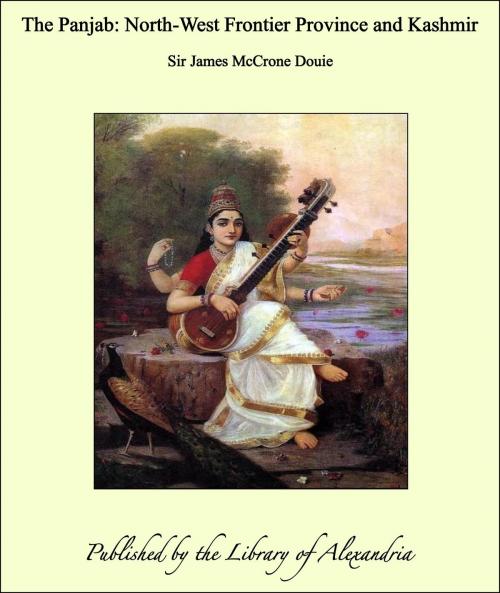The Panjab: North-West Frontier Province and Kashmir
Nonfiction, Religion & Spirituality, New Age, History, Fiction & Literature| Author: | Sir James McCrone Douie | ISBN: | 9781465558855 |
| Publisher: | Library of Alexandria | Publication: | July 29, 2009 |
| Imprint: | Library of Alexandria | Language: | English |
| Author: | Sir James McCrone Douie |
| ISBN: | 9781465558855 |
| Publisher: | Library of Alexandria |
| Publication: | July 29, 2009 |
| Imprint: | Library of Alexandria |
| Language: | English |
EDITOR'S In his opening chapter Sir James Douie refers to the fact that the area treated in this volume—just one quarter of a million square miles—is comparable to that of Austria-Hungary. The comparison might be extended; for on ethnographical, linguistic and physical grounds, the geographical unit now treated is just as homogeneous in composition as the Dual Monarchy. It is only in the political sense and by force of the ruling classes, temporarily united in one monarch, that the term Osterreichisch could be used to include the Poles of Galicia, the Czechs of Bohemia and Moravia, the Szeklers, Saxons and more numerous Rumanians of Transylvania, the Croats, Slovenes and Italians of "Illyria," with the Magyars of the Hungarian plain. The term Punjábi much more nearly, but still imperfectly, covers the people of the Panjáb, the North-West Frontier Province, Kashmír and the associated smaller Native States. The Sikh, Muhammadan and Hindu Jats, the Kashmírís and the Rájputs all belong to the tall, fair, leptorrhine Indo-Aryan main stock of the area, merging on the west and south-west into the Biluch and Pathán Turko-Iranian, and fringed in the hill districts on the north with what have been described as products of the "contact metamorphism" with the Mongoloid tribes of Central Asia. Thus, in spite of the inevitable blurring of boundary lines, the political divisions treated together in this volume, form a fairly clean-cut geographical unit. Sir James Douie, in this work, is obviously living over again the happy thirty-five years which he devoted to the service of North-West India: his accounts of the physiography, the flora and fauna, the people and the administration are essentially the personal recollections of one who has first studied the details as a District Officer and has afterwards corrected his perspective, stage by stage, from the successively higher view-point of a Commissioner, the Chief Secretary, Financial Commissioner, and finally as Officiating Lieut.-Governor. No one could more appropriately undertake the task of an accurate and well-proportioned thumb-nail sketch of North-West India and, what is equally important to the earnest reader, no author could more obviously delight in his subject. T. H. H
EDITOR'S In his opening chapter Sir James Douie refers to the fact that the area treated in this volume—just one quarter of a million square miles—is comparable to that of Austria-Hungary. The comparison might be extended; for on ethnographical, linguistic and physical grounds, the geographical unit now treated is just as homogeneous in composition as the Dual Monarchy. It is only in the political sense and by force of the ruling classes, temporarily united in one monarch, that the term Osterreichisch could be used to include the Poles of Galicia, the Czechs of Bohemia and Moravia, the Szeklers, Saxons and more numerous Rumanians of Transylvania, the Croats, Slovenes and Italians of "Illyria," with the Magyars of the Hungarian plain. The term Punjábi much more nearly, but still imperfectly, covers the people of the Panjáb, the North-West Frontier Province, Kashmír and the associated smaller Native States. The Sikh, Muhammadan and Hindu Jats, the Kashmírís and the Rájputs all belong to the tall, fair, leptorrhine Indo-Aryan main stock of the area, merging on the west and south-west into the Biluch and Pathán Turko-Iranian, and fringed in the hill districts on the north with what have been described as products of the "contact metamorphism" with the Mongoloid tribes of Central Asia. Thus, in spite of the inevitable blurring of boundary lines, the political divisions treated together in this volume, form a fairly clean-cut geographical unit. Sir James Douie, in this work, is obviously living over again the happy thirty-five years which he devoted to the service of North-West India: his accounts of the physiography, the flora and fauna, the people and the administration are essentially the personal recollections of one who has first studied the details as a District Officer and has afterwards corrected his perspective, stage by stage, from the successively higher view-point of a Commissioner, the Chief Secretary, Financial Commissioner, and finally as Officiating Lieut.-Governor. No one could more appropriately undertake the task of an accurate and well-proportioned thumb-nail sketch of North-West India and, what is equally important to the earnest reader, no author could more obviously delight in his subject. T. H. H















